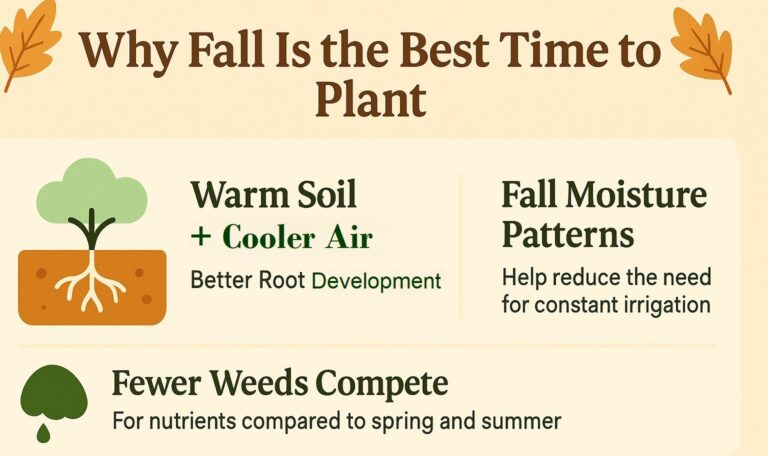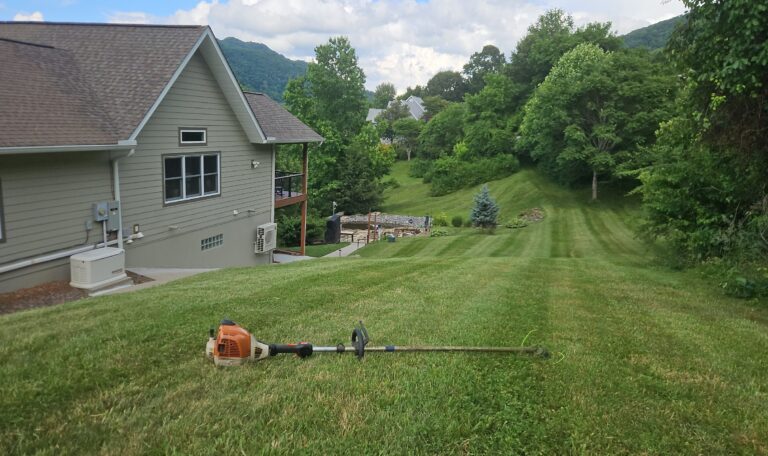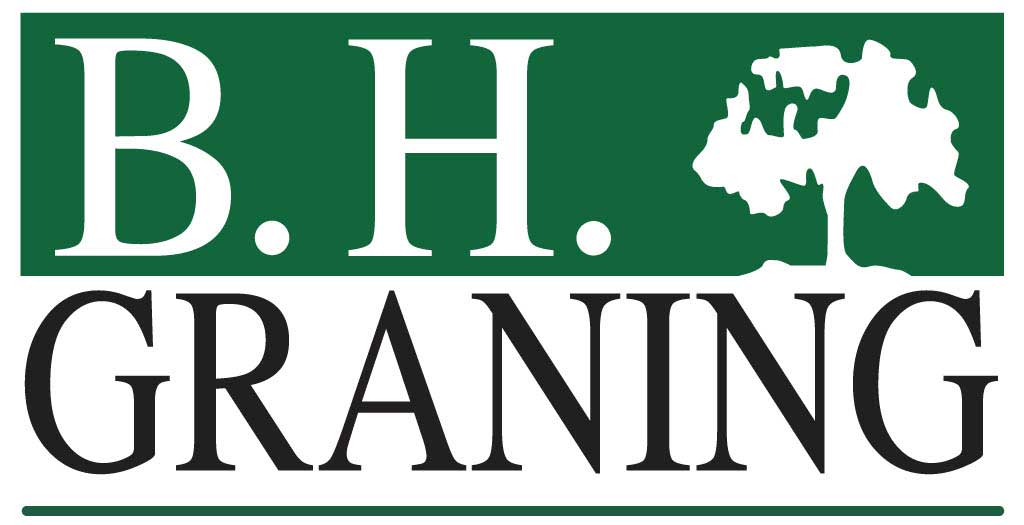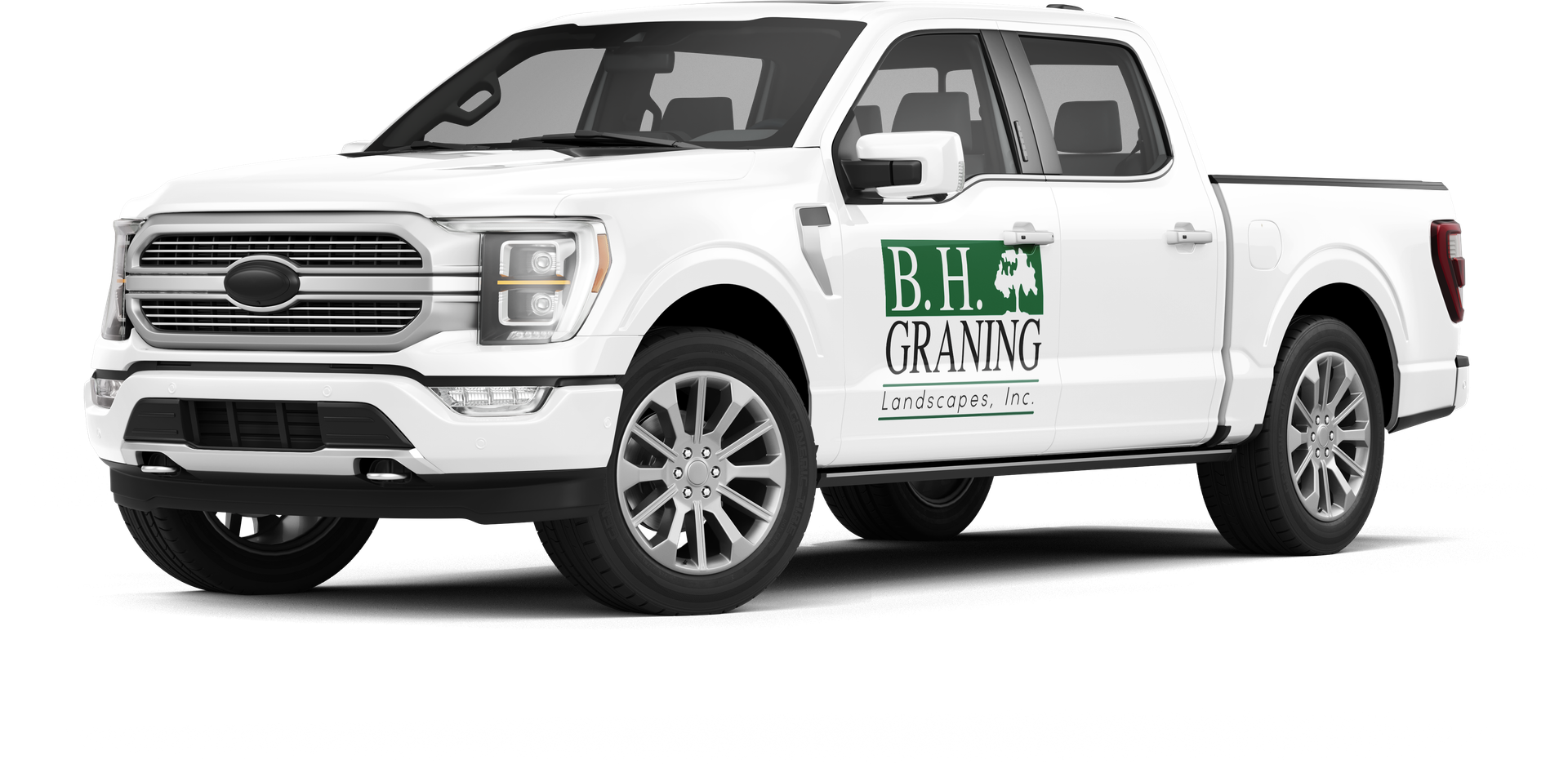If you’re thinking about establishing a new lawn or revitalizing an existing one, late summer into early fall is the ideal time to take action—especially here in the mountains of Western North Carolina. At B. H. Graning Landscapes, Inc., we help homeowners and property managers take advantage of this optimal planting window to get healthy, beautiful turf that lasts.
Why Timing Matters: The Cool-Season Advantage
The climate in our region plays a key role in turf success. Western North Carolina’s moderate late-summer temperatures and consistent early fall rainfall create ideal conditions for grass seed germination and sod establishment. Here’s why this window is so important:
- Warm soil + cooler air temperatures = better root development.
- Less heat stress means lower water demand and reduced transplant shock.
- Fewer weeds compete for nutrients compared to spring and summer.
Fall moisture patterns help reduce the need for constant irrigation

By planting in this window—roughly mid-August through mid-October—your lawn gets a head start before winter and is better prepared to thrive come spring.
Seeding vs. Sodding: Which Is Right for You?
Both seeding and sodding have their benefits, and our team can help determine the right option for your landscape based on budget, timing, and soil conditions.
Seeding:
- More cost-effective
- Offers a wide range of grass type choices, especially cool-season fescues
- Ideal for filling in patchy or damaged areas
- Requires more patience and care during establishment
Sodding:
- Instant results with a green lawn on day one
- Erosion control on slopes or bare ground
- More expensive upfront, but provides faster functionality
- Best when immediate ground coverage is needed
Whether you choose to seed or sod, proper site preparation is key. This includes soil testing, grading, amending the soil with lime or compost if needed, and installing or adjusting irrigation.
Fall is for Planting, Too
Sod and seed aren’t the only things that benefit from this season—trees, shrubs, and perennials thrive when planted in early fall.
Why?
- Cooler air temperatures reduce stress on young plants.
- Warm soil allows roots to grow deep and strong before winter.
- Autumn rainfall helps establish plants without the heavy watering required in summer.
- Less competition from pests and weeds allows for better early growth.
This is an excellent time to add native shrubs, ornamental grasses, or seasonal color with hardy perennials like asters, echinacea, or black-eyed Susans. Trees such as dogwoods, red maples, and serviceberries also do well when planted in the fall.
If you’re considering reworking a garden bed or installing a new foundation planting, doing so now sets the stage for beautiful results next spring.
Local Knowledge Makes a Difference
Our mountain microclimates—from Sylva to Highlands to Brevard—can vary dramatically in elevation, sun exposure, and soil type. B. H. Graning Landscapes, Inc. brings decades of experience working with these unique conditions. We know which grass varieties and plant species perform best in our region and how to prepare your site for long-term success.
We commonly recommend:
- Tall fescue blends for shaded or cooler areas
- TifTuf Bermuda sod for high-traffic or full-sun locations
- Fine fescues for slopes or low-maintenance naturalized lawns
- Native plants and hardy perennials for low-maintenance, pollinator-friendly landscapes

Start Now for Spring Success
Taking action now means your lawn and landscape will be well-established before winter dormancy, giving roots time to grow strong. Come spring, you’ll enjoy a lush lawn, vibrant plantings, and fewer maintenance headaches.
Whether you’re starting fresh or rejuvenating an existing yard, our team is here to help with professional grading, soil prep, seeding, sodding, planting, and irrigation setup.
Ready to green up your yard and plant for the future?
Contact B. H. Graning Landscapes, Inc. at 866-455-LAWN or visit bhglandscapes.com to schedule your consultation today.

